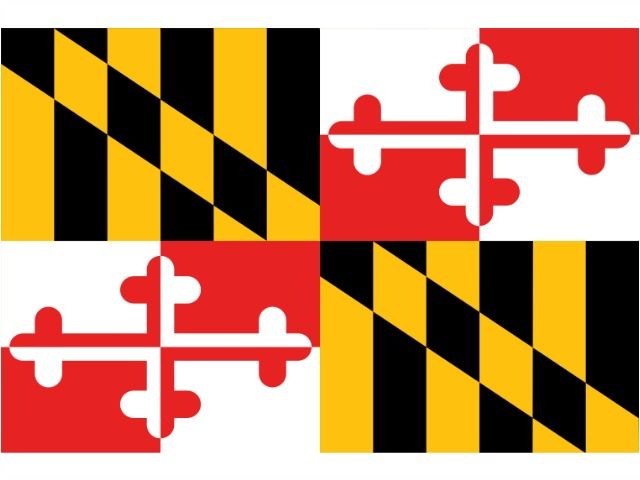Every few years, liberals launch an attack on the distinctive Maryland State flag because they claim it is somehow a “secret” Confederate flag.
This week the charge against the 113-year-old banner was resurrected when leftist activist Benjamin Jancewic jumped on Twitter to make as if he was the first person ever to notice that the state’s brightly colored flag has some connections to the civil war.
In interviews Jancewic claimed he was “surprised” to find that the banner was “half Confederate,” the Baltimore Sun reported Thursday.
“I was completely surprised,” he said. “I think if people really really knew the ties to the Confederacy, I don’t think it would be as popular.”
“Nobody knew, nobody had any idea,” Jancewic insisted.
The activist went on: “Saying that racism is bad is still an inflammatory thing in this country.” He concluded, “But that doesn’t mean that I’m gonna stop doing it.”
Jancewic’s claims that “nobody had any idea” about the history of the distinctive state banner rings a bit hollow since the story is dredged up every few years by the media outlets looking for some space filler. Indeed, the story made the rounds only two years ago at Greater Greater Washington and a few months later in the Washingtonian.
Of course, the truth is the flag’s origin is hardly a secret. Anyone who takes just a few seconds to look it up will see all the influences the flag contains. Some of that history is even clearly posted at the Maryland Secretary of State website.
The yellow and black portion of the flag was taken from the Calvert family coat of arms, the heraldic banner of George Calvert, the first Lord Baltimore. He died in 1632; the civil war broke out in the 1860s.
The Yellow and black Calvert symbol had been used unofficially for a long period as a symbol of the Old Line State, but there is civil war history to the red and white part of the flag.
When the war broke out, Confederate sympathizers decided to use the red and white herald of Lord Baltimore’s mother, the Crosslands, to denote their rebellion against the federal union. Of course, even with its use by southern sympathizers, the red and white icon is another symbol that reaches back hundreds of years before there was a Confederacy.
Ultimately, the state itself never left the union during the civil war and upwards to 60,000 Marylanders joined the union army. And yet, the state was also a hotbed for Confederate sympathy, though only about 25,000 served in the southern cause.
By the 1880s Marylanders had begun using the flag that would later become the official state flag with the yellow and black of Lord Calvert’s colors combined with the red and white of the Crosslands. It became of such common use that by 1904 it was adopted as the state’s flag by an act of the state legislature.
At the time of its official adoption, the flag was even celebrated as a symbol of the reunification of the north and south and proudly heralded as a banner of unity.
Maryland’s flag has also been celebrated for other reasons. In 2001 a survey by the North American Vexillological Association awarded the Maryland state flag fourth best in design quality of the 72 flags in Canada, the U.S., and U.S. territories.
With all this history so easily found, one suspects that Jancewic is merely looking for a cause to flog despite that there is no real issue and his claim that the flag is “half Confederate” isn’t really even true. It is at best one-quarter “Confederate,” while the rest of its parts are hundreds of years older in origin than the history of the Confederacy.
And there is nothing secret or hidden about any of it.
Follow Warner Todd Huston on Twitter @warnerthuston or email the author at igcolonel@hotmail.com.

COMMENTS
Please let us know if you're having issues with commenting.